Understanding How the Subcommissural Organ and Other Periventricular Secretory Structures Contribute via the Cerebrospinal Fluid to Neurogenesis
- PMID: 26778959
- PMCID: PMC4689152
- DOI: 10.3389/fncel.2015.00480
Understanding How the Subcommissural Organ and Other Periventricular Secretory Structures Contribute via the Cerebrospinal Fluid to Neurogenesis
Abstract
The dynamic and molecular composition of the cerebrospinal fluid (CSF) and, consequently, the CSF physiology is much more complex and fascinating than the simplistic view held for decades. Signal molecules either transported from blood to CSF or secreted into the CSF by circumventricular organs and CSF-contacting neurons, use the CSF to reach their targets in the brain, including the pre- and postnatal neurogenic niche. The subcommissural organ (SCO), a highly conserved brain gland present throughout the vertebrate phylum, is one of the sources for signals, as well as the choroid plexus, tanycytes and CSF-contacting neurons. The SCO secretes into the fetal and adult CSF SCO-spondin, transthyretin, and basic fibroblast growth factor. These proteins participate in certain aspects of neurogenesis, such as cell cycle of neural stem cells, neuronal differentiation, and axon pathfinding. Through the CSF, the SCO-secretory proteins may reach virtually any target in the embryonic and adult central nervous system. Since the SCO continues to secrete throughout life span, it seems likely that the neurogenetic property of the SCO compounds would be targeted to the niches where neurogenesis continues in adulthood. This review is aimed to bring into discussion early and new evidence concerning the role(s) of the SCO, and the probable mechanisms by which SCO compounds can readily reach the neurogenic niche of the subventricular zone flowing with the CSF to participate in the regulation of the neurogenic niche. As we unfold the multiples trans-fluid talks between discrete brain domains we will have more tools to influence such talks.
Keywords: CSF-contacting neurons; SCO-spondin; cerebrospinal fluid; circumventricular organs; integrins; neurogenesis; subcommissural organ; transthyretin.
Figures
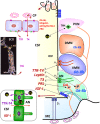
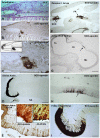
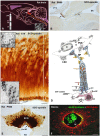
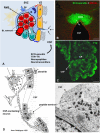

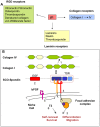
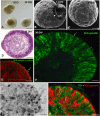

Similar articles
-
A novel feature of the ancient organ: A possible involvement of the subcommissural organ in neurogenic/gliogenic potential in the adult brain.Front Neurosci. 2023 Mar 7;17:1141913. doi: 10.3389/fnins.2023.1141913. eCollection 2023. Front Neurosci. 2023. PMID: 36960167 Free PMC article. Review.
-
Uncovering the role of the subcommissural organ in early brain development through transcriptomic analysis.Biol Res. 2024 Jul 27;57(1):49. doi: 10.1186/s40659-024-00524-y. Biol Res. 2024. PMID: 39068496 Free PMC article.
-
The subcommissural organ of the rat secretes Reissner's fiber glycoproteins and CSF-soluble proteins reaching the internal and external CSF compartments.Cerebrospinal Fluid Res. 2008 Jan 24;5:3. doi: 10.1186/1743-8454-5-3. Cerebrospinal Fluid Res. 2008. PMID: 18218138 Free PMC article.
-
Synthesis of transthyretin by the ependymal cells of the subcommissural organ.Cell Tissue Res. 2005 Jun;320(3):487-99. doi: 10.1007/s00441-004-0997-0. Epub 2005 Apr 22. Cell Tissue Res. 2005. PMID: 15846516
-
Human subcommissural organ, with particular emphasis on its secretory activity during the fetal life.Microsc Res Tech. 2001 Mar 1;52(5):573-90. doi: 10.1002/1097-0029(20010301)52:5<573::AID-JEMT1042>3.0.CO;2-6. Microsc Res Tech. 2001. PMID: 11241867 Review.
Cited by
-
SCO-spondin knockout mice exhibit small brain ventricles and mild spine deformation.Fluids Barriers CNS. 2023 Dec 5;20(1):89. doi: 10.1186/s12987-023-00491-8. Fluids Barriers CNS. 2023. PMID: 38049798 Free PMC article.
-
Ependymal cells and neurodegenerative disease: outcomes of compromised ependymal barrier function.Brain Commun. 2022 Nov 4;4(6):fcac288. doi: 10.1093/braincomms/fcac288. eCollection 2022. Brain Commun. 2022. PMID: 36415662 Free PMC article. Review.
-
Current Understanding of the Neural Stem Cell Niches.Cells. 2022 Sep 26;11(19):3002. doi: 10.3390/cells11193002. Cells. 2022. PMID: 36230964 Free PMC article. Review.
-
Early Regressive Development of the Subcommissural Organ of Two Human Fetuses with Non-Communicating Hydrocephalus.Children (Basel). 2022 Dec 14;9(12):1966. doi: 10.3390/children9121966. Children (Basel). 2022. PMID: 36553409 Free PMC article.
-
Resolving primary pathomechanisms driving idiopathic-like spinal curvature using a new katnb1 scoliosis model.iScience. 2022 Aug 28;25(9):105028. doi: 10.1016/j.isci.2022.105028. eCollection 2022 Sep 16. iScience. 2022. PMID: 36105588 Free PMC article.
References
Publication types
LinkOut - more resources
Full Text Sources
Other Literature Sources
Research Materials

